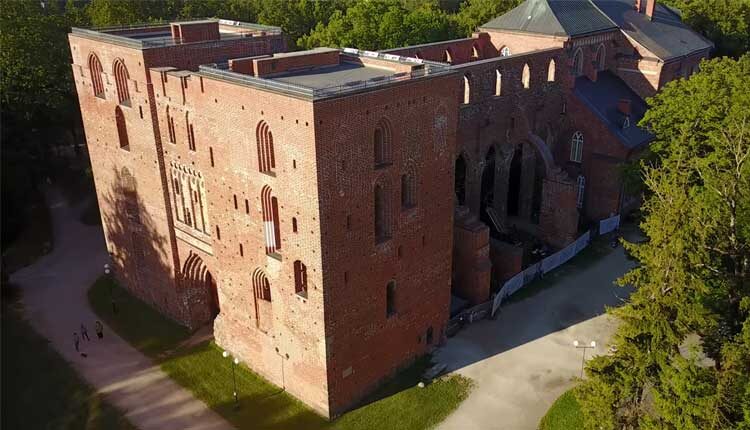
Tartu Cathedral
The Tartu Cathedral (also known as Tartu Dome, Tartu Castle) is the largest sacral building in Estonia. Additionally, it is considered the only medieval church with two towers in the republic that has survived from the Middle Ages. Unfortunately, today the church is not used for its original purpose, and from the outside, it appears merely as the remnants of once a majestic structure.
History of Tartu Cathedral
It is presumed that the construction of Tartu Cathedral began in the 13th century. The building of the church continued until the 16th century, making it the largest structure of its kind in all of Eastern Europe at that time. Within the same boundaries, it was considered the largest brick-built structure. The church was destroyed during the Livonian War and has been out of operation ever since.
In 1802, the former Cathedral building began a new chapter. A library was established in the choir section of the church according to the design of architect Krause. In 1981, the Historical Museum of Tartu University moved here. In 2005, the church towers were renovated and opened for visitors.
Church’s Viewing Platform
An observation deck is equipped on the roof of Tartu Cathedral. From here, one can view both the old town and new districts. To ascend the tower, one must purchase an entrance ticket. The climb is made via a rather convenient staircase. En route, visitors can admire the view of the church’s inner courtyard and peek into the surviving interior rooms.
Photo Gallery
University of Tartu Museum
The University of Tartu Museum operates within the premises of Tartu Cathedral. Regular exhibitions introduce visitors to the history and development of science, as well as address important issues of contemporary public life. Moreover, the museum organizes various educational events for students of all ages.
The museum’s exhibition occupies four halls:
- The White Hall, where one can learn interesting facts about the University of Tartu and view a digital gallery of portraits of its rectors.
- The Morgenstern Hall acquaints visitors with the 400-year history of the university.
- The Treasury houses treasures reflecting the history of university figures, the educational process, and scientific work.
- In the Mad Scientist’s Office, both big and small visitors can engage in research and experiments using interactive solutions.
Location on the Map
Other Places of Interest
- For those interested in learning more about the history of Estonia’s second-largest city, a visit to the Tartu City Museum is highly recommended.
- For those wishing to understand the locals, a visit to the Tartu City Market is advisable. Near its main entrance stands a sculpture of a pig, locally known as Roosi.
- The main tourist center of the city is Tartu Town Hall Square. In the summer, street restaurants operate here, and in the winter, one can enjoy ice skating.
